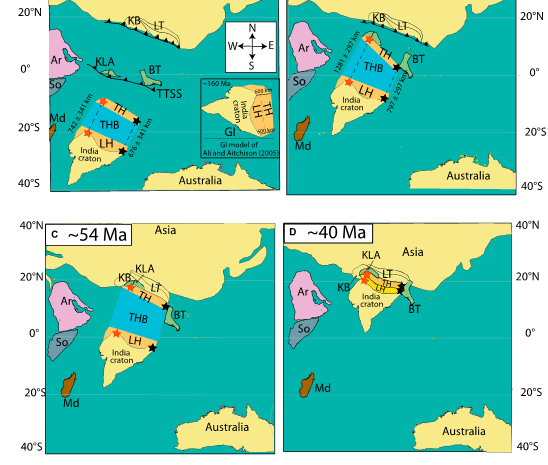92055205-GSA:Multi-stage India-Asia collision: Paleomagnetic constraints from Hazara-Kashmir syntaxis in the western Himalaya
ABSTRACT
The India-Asia collision is the most spectacular, recent, and still active tectonic event of the Earth’s history, leading to the uplift of the Himalayan-Tibetan orogen, which has been explained through several hypo the tical models. Still, controversy remains, such as how and when it occurred. Here we report a paleomagnetic study of Cretaceous Tertiary marine sediments from the Tethyan Himalaya (TH) in the Hazara area, north Pakistan, which aims to constrain timing for the onset of the India-Asia collision and to confirm the validity of already proposed models, particularly in western Himalaya’s perspective. Our results suggest that the TH was located at a paleolatitude of 8.5°S ± 3.8°and 13.1°N ± 3.8° during the interval of ca.84–79 Ma and 59–56 Ma, respectively. A comparison between paleopoles obtained from the current study and coeval ones of
the India Plate indicates that the TH rifted from Greater India before the Late Cretaceous, generating the Tethys Himalaya Basin(THB). Our findings support a model for a multi-stage collision involving at least two major subduction systems. A collision of the TH with the Trans-Tethyan subduction system (TTSS) began first in Late Cretaceous Early Paleocene times (ca. 65 Ma), followed by a later collision with Asia at 55–52 Ma.The onset of the collision between the TH(plus TTSS) and Asia could not have occurred earlier than 59–56 Ma in the westernHimalaya. Subsequently, the India craton collided with the TH, resulting in the diachronous closure of the THB between ca. 50 and ca. 40 Ma from west to east. These findings are consistent with geological and geochemical evidence and have a broad implication forplate reconfigurations, global climate, and biodiversity of collisional processes.

.png)
